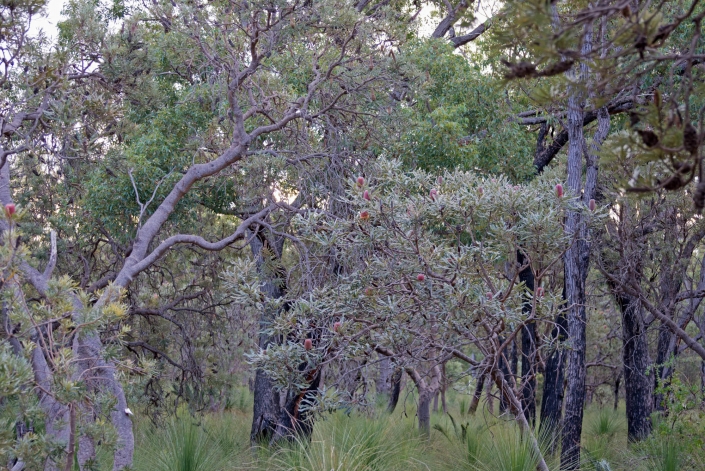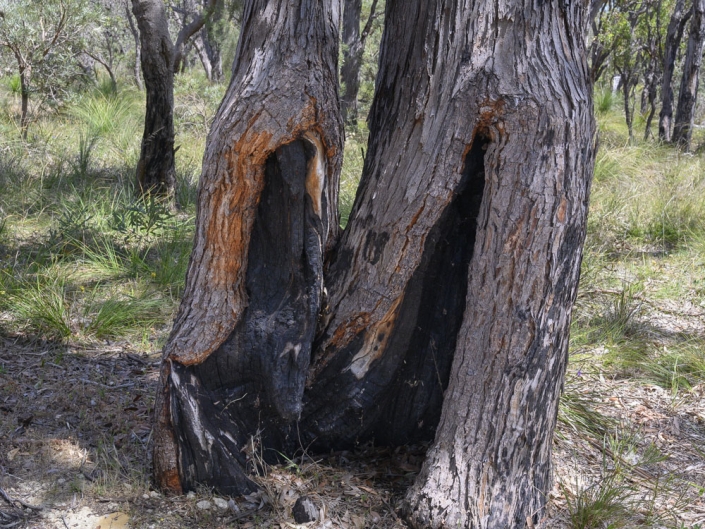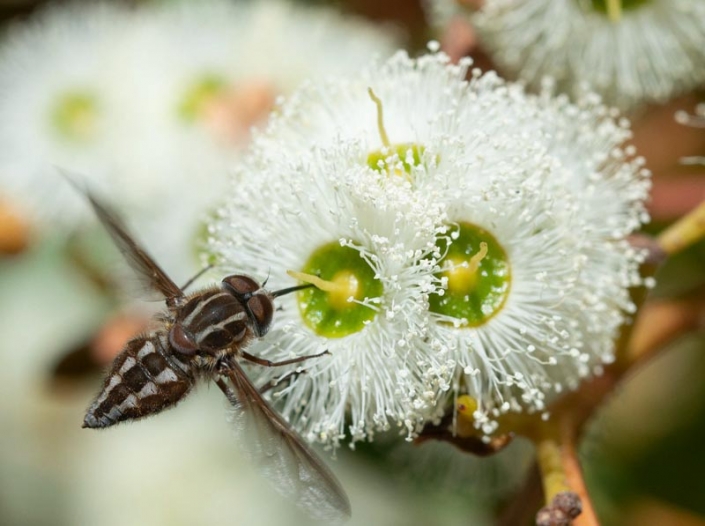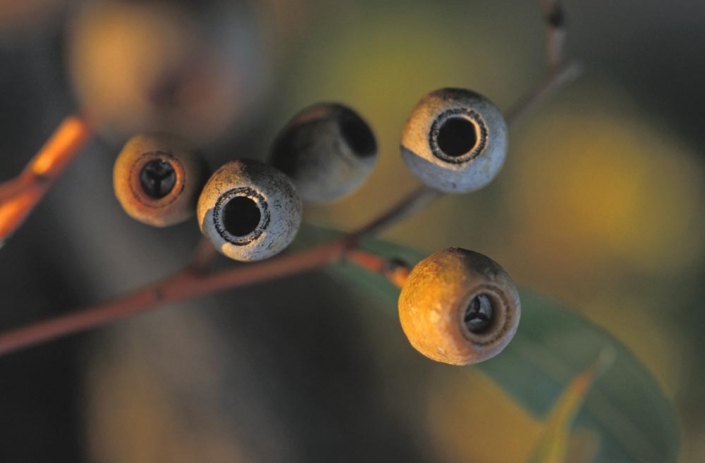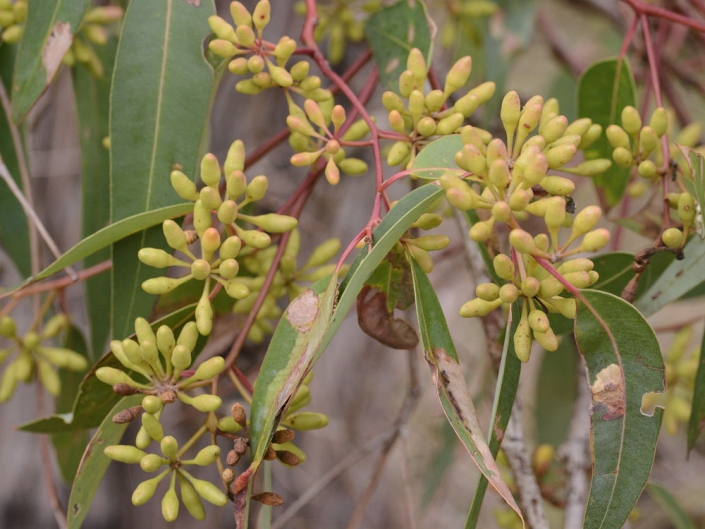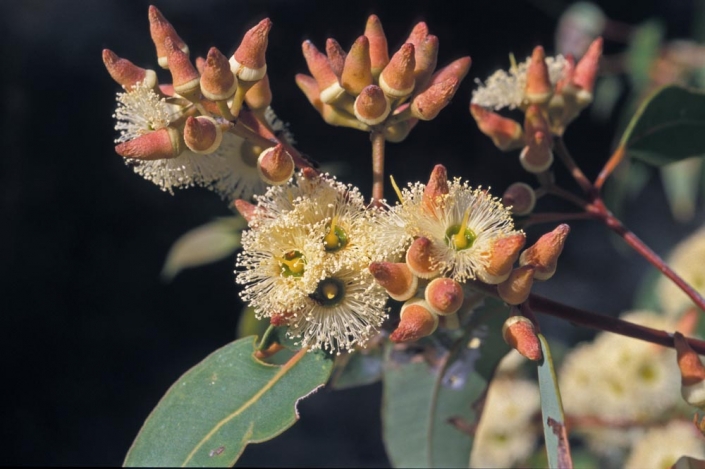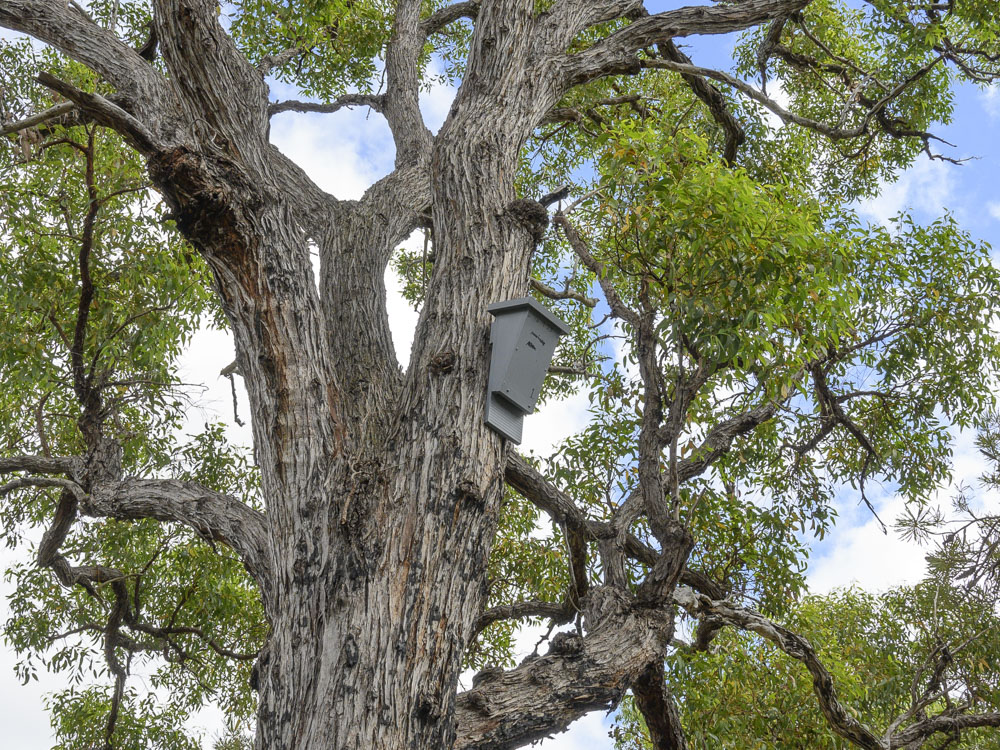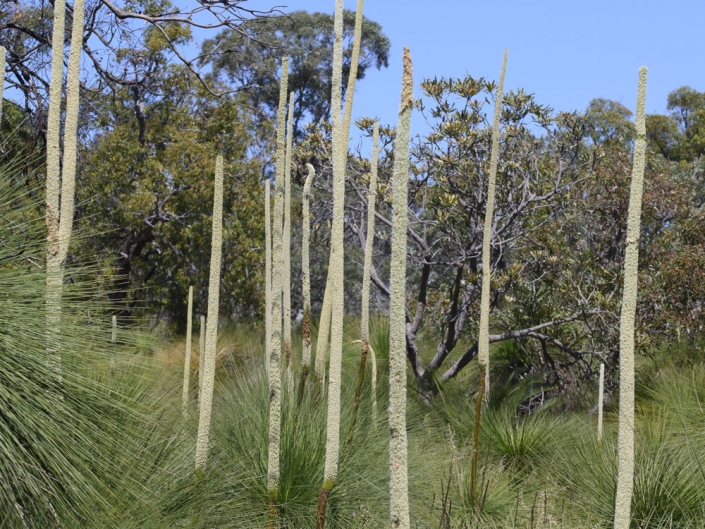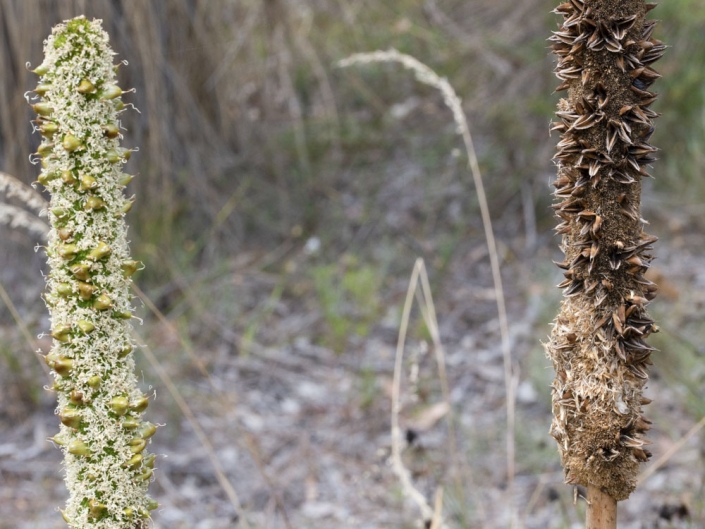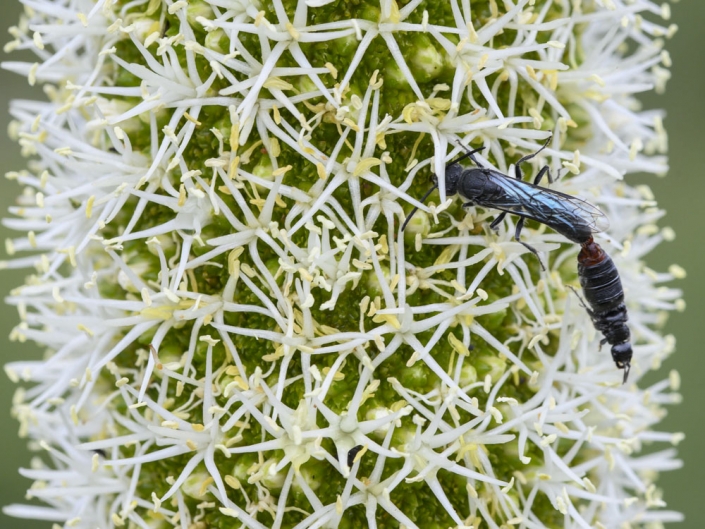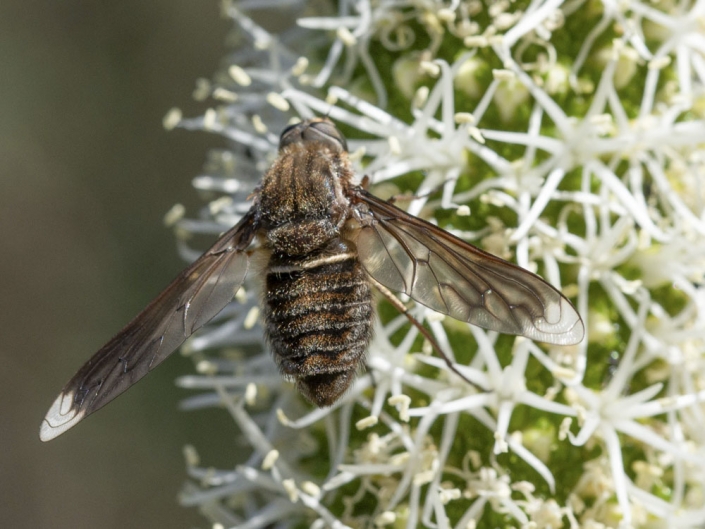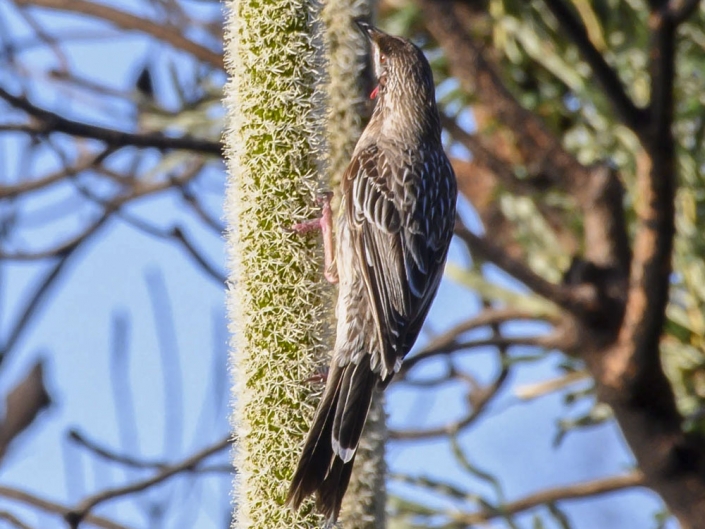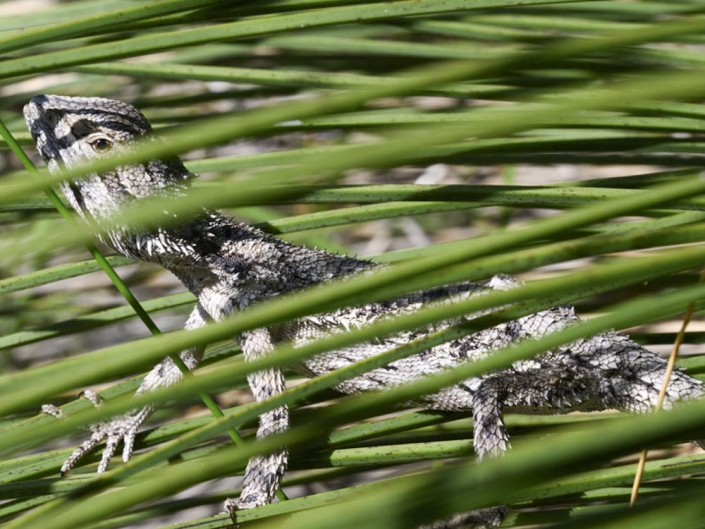2. Big Jarrah Trees
This is a shady area with impressive jarrah trees, wildflowers in season and a low bench cut from a log. Understorey vegetation includes Native Wisteria, shrubs, sedges, and balgas, and is in excellent condition. This is a great spot for social meetings, meditation, or other restful activities.
Common Wildflowers
Winter – Native Wisteria (Hardenbergia comptoniana), Yellow Buttercups (Hibbertia hypericoides), Harsh Hakea (Hakea prostrata), Daviesia nudiflora
Spring – Morning Iris (Orthrosanthus laxiflorus), Milkmaids, Wedge Pea (Gompholobium tomentosum), Yellow Buttercups (Hibbertia hypericoides), Cowslip and Pansy Orchids
Late Spring & Early Summer – Mignonette Orchid (Microtis media), Cottonheads (Conostylis aculeata), Pineapple Bush (Dasypogon bromeliifolius), Jarrah, Candle Banksia
Summer – Elegant Pronaya (Billardiera fraseri)
Focus 3. Jarrah Trees
Jarrah (Eucalyptus marginata) is one of the most ecologically important and useful trees in the Southwest of Western Australia. In Warwick Conservation Reserve, jarrah trees form an intermediate tree canopy over banksia and under tuart trees. Flowering is abundant from late spring into summer, supporting honeyeaters and insects at a time when relatively few other plants are flowering.
Hollows of various sizes and depths in mature Jarrah and Tuart trees are extremely valuable as nesting sites for parrots and other birds in Warwick Conversation Reserve. These hollows take up to 150-200 years to develop, due to activities of termites, burrowing insects, wood rotting fungi and storm damage. The tree survives as long as the living outer rings of wood and protective bark remain intact. However, hollows can be lost to fires which are too intense and frequent. Bird species that use these tree hollows include the Twenty-eight, Red-capped, Elegant and Regent Parrots, the Western Long-billed Corella and potentially Carnaby’s, Baudin’s and Forest Red-tailed Black-cockatoos.








